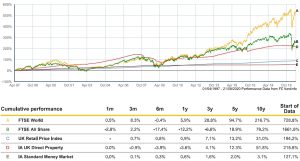A good financial planner could be your most valuable asset. OK, I would say that I know, but it’s true – I promise you! I often take on new clients who don’t understand what financial planning involves or the benefit it can bring. It’s very simple – financial certainty.
This post should help you understand the benefit of great financial planning. I will look at the different types of adviser and some pro’s and cons. You should find this useful whether you need help for the first time, or if you want to know yours is up to scratch.
Firstly, I think it would be best to manage expectations and dispel some myths about what the best financial planners do.
What they will do…
- Understand you, your family and the life you want.
- Work with you to put a financial plan in place to achieve it.
- Simplify your financial affairs and make them easy to understand.
- Hold your feet to the fire when it comes to the plan and check progress regularly.
- Filter all of the financial ‘noise’ and help you focus on what’s important.
- Tell you how it is rather than what you want to hear.
- Make your finances as tax efficient as possible.
- Be agile and work with you to change the plan when needed.
- Be a sounding board for any of your future financial decisions.
- Ultimately give you peace of mind and increase your long term prosperity.
- Oh… and…ensure you have all the right financial products at the right time.
What they should never do…
- Recommend products without understanding you and your financial plan.
- Time the investment markets.
- Recommend the latest investment craze or hot pick.
- Allow you to sell investments in a declining market – unless absolutely necessary.
- Claim to be able to provide high returns with low risk.
- Find reasons to sell you a product.
- Tell you they know which way the markets are going to go.
- Recommend you do anything that they would not do themselves.
So, if you’re thinking “crikey what they do sounds good” read to the end. If not, just bear in mind the next bit…
The do it yourself option
Tiny little rant alert. Please hear me out for a few seconds…
Unless you know your stuff in all things financial or are prepared for the probability of having less money, please don’t do this!
Over the years I’ve seen numerous DIY investment plans go miserably wrong – it’s seriously counterproductive to try and save money here. Those that I have seen go well have mainly been due to a certain amount of luck and have been singular events in a wider plan that doesn’t usually exist.
If however you remain fastidiously DIY, just please remember three things…
- You don’t know what you don’t know.
- Investment craze’s and hot picks end in disaster. Don’t put all your money in them.
- If it seems too good to be true it probably is!
I know that might all seem like a no-brainer, but you would not believe the number of normally sensible people who turn into the Mad Hatter when it comes to financial planning. It’s complex. Don’t use google to plan your retirement – you could end up old and broke.
OK, mini rant over! And breathe…
Seeking out some good financial planning advice
Still reading? Great! So, how do you find the right adviser? Google can now be your friend! Well, maybe. A local search will undoubtedly pull up hundreds of options including local firms and other directories with hundreds more advisers. Too much choice!
The problem is there are vast differences in advice offerings and quality. As a result, I regularly take on new clients who have had an experience which was less than ideal or quite frankly rubbish. This often comes at significant cost in time and stress.
Another quick note – not all advisers do everything, so make sure you have found one who can help with your initial problem (mortgage, retirement, inheritance etc) and remember the old saying ‘jack of all trades master of none’.
Questions to ask
Now I obviously think that, if we specialise in your area, Agile would be the best choice. I am unbelievably biased of course – and quite rightly so! However, everyone is different and you should always, always make an informed decision on your planner. It’s got to be someone you are comfortable with because a poor relationship won’t be good for either party. It’s also easy to get on like a house on fire with an adviser that has a terrible offering and ultimately you’ll probably be worse off financially.
Five words to remember here – Independent, Qualified, Transparent, Genuine. Let me explain using a few questions you should ask about an adviser…
Are they independent or restricted?
An ‘independent’ adviser must make a search from across the market to make sure you have suitable financial solutions for your needs. They are therefore on your side. They can focus on your life, your plan and getting the best outcomes for you. Importantly, it means policies can usually be changed in future as your life does, without the need to move firm. Yes!
Other advisers are ‘restricted’ and in the worst case you may have someone that only recommends their own products or a very short selection. Whilst it isn’t always the case, the adviser can be compelled to recommend their product knowing full well that you could do better elsewhere. Undoubtedly they will tell you theirs is the best to ever grace this earth and that this will be true forever. Why? Because otherwise they won’t get paid. No!
I reckon you’re getting the gist here. When you add up the cost (more on this later) independent financial planning isn’t more expensive than restricted. There are plenty of independent firms of all sizes to choose from if that’s a concern for you. So why wouldn’t you use them? It’s better advice and better value for money. Think of it like this – would you ever want to see a doctor (no matter how good they might be) knowing they could only prescribe a limited range of medicine? In my view there is absolutely no need to use a restricted adviser – but don’t just take my word for it. You can find the views of BBC 4’s money man Paul Lewis here, but ask most financial commentators and they will tell you the same thing.
A firms website and introductory documents should make their independence or the detail of any restriction clear.
Do they hold higher level qualifications? Are they Chartered or Certified?
I will start by saying this isn’t the be all and end all. I know many very experienced planners without a raft of letters after their name. But, just like many other professions, higher qualifications would in most cases indicate quality advice and a good level of knowledge and experience.
The minimum standard for financial advisers in the UK is DipPFS (or similar) which is a level 4 diploma. More qualified advisers will hold titles such as APFS or FPFS which are level 6 and equivalent to a degree.
A Chartered or Certified financial planner has shown a commitment to getting to level 6 and that they have experience. The status is awarded by their professional body and you can be sure this means the adviser has been put through their paces. It can help you to differentiate those who are passionate about giving the right advice from those pesky product pushers.
More information on adviser qualifications can be found here and you would usually find all this info displayed on a firms website or literature. The good news is that in lots of cases this won’t increase advice costs, but ask my next questions to be sure…
What are the costs for initial financial planning?
Good financial planning advice costs money and is well worth it for those who need it. It’s sometimes a pain to compare costs as there is a big difference between advisers. Things are much more transparent than they used to be, although unfortunately some still fall way below the mark.
For initial advice you could pay a fixed fee, hourly rate, percentage of assets advised upon or a mixture of these. Your adviser should always highlight costs in ‘pounds and pence’ so you can compare. Unfortunately, some of the more expensive advisers are the more restricted and least transparent. It’s quite frankly scandalous. You could be paying £1000’s more for less – be very careful and always get a full picture of the cost of advice and implementation.
To confuse things more, some firms only charge if you go ahead. This might be explained to you as a great thing but it certainly isn’t. This is known as ‘contingent charging’ and again, its bad. The adviser is compelled to recommend a solution that means you need to change things in order to get paid. Be wary and avoid if possible! There are plenty of firms that charge fairly and provide better advice.
What are the costs for ongoing financial planning?
Understanding what you will be charged on an ongoing basis is very important. Higher ongoing charges mean fewer pounds in your pocket in the long run. Just half a percent difference in total ongoing costs per year would reduce an average pension pot by tens of thousands over a working life. This would be compounded much more with a poor investment.
What you need to understand is the total ongoing expense of your solution. This is important, because some firms quoting lower ongoing advice fees will actually be charging higher investment fees on their own products. The total ongoing expense should include the ongoing advice, product, fund manager and any extra expenses or transaction costs in the fund. You should receive this in both percentage and ‘pounds and pence’ terms for comparison on an illustration.
My advice – get a piece of paper and table all of the costs. Scrutinise it all. If you are concerned about your current situation we offer a free second opinion service to compare your plans on an independent basis.
Can I work with this adviser now and in the long term?
Most advisers will offer a free initial meeting and I advise you to take it! Make sure you will get along, whilst asking as many questions as possible. First impressions count and your adviser will hopefully be with you for life. Most initial meetings will give you lots of useful information and you’ll leave with a much better understanding of what’s on offer and the costs.
It’s worth speaking to two or three firms to get a feel for how they work, considering all of the questions above. You’ll then be able to choose which one is a fit for you. Why am I telling you to speak to other advisers? Because it’s about you not us! I want our clients to work with us because they know we are a good fit for them and we get along.
It’s also important to understand the type of firm you are using and where the adviser is in their career. Many firms see clients as a commodity and their business structure relies on advisers selling clients to each other internally. They probably also have high sales targets and a high adviser turnover to go with it. No! Both of these things are bad and mean you get passed from pillar to post. I have more than a few clients with me now who have experienced this with previous firms.
In Summary
For a good adviser, and there are many, the focus is the client and their plan. They will always be transparent and will always give value for what they charge. That means being independent and making sure they know their stuff. Choose carefully.
As always, you can contact us for a chat about any of the above, whether you want to use Agile or feel like another firm or specialism would be right for you. We will always be happy to point you in the right direction.
Thanks for reading, I hope this was helpful and good luck with planning your financial future!
Until next time…
Chris @ Agile













